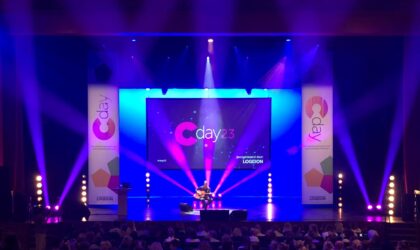
Innovation and change: how do you achieve it?
To keep up as a communication professional, you must understand new technology and embrace current themes, such as generative AI and ESG. But above all: get other people on board. How do you achieve it?
October 3, 2023

October 3, 2023

Anyone can come up with an idea. Just ask a few people to think of an idea to sell soda. Or shoes. It doesn’t even require a briefing. You can skip research too. Because ideas are something we all have.
But what if there are certain goals that need to be achieved? Or a budget has been set? What if we want to reach a specific target group? Then it quickly becomes apparent that a lot of spontaneous ideas are written off. Freely brainstorming sounds nice, but without certain boundaries, it is a pointless exercise.
Boundaries. It starts with a goal. Reputation enhancement? Increased sales? Brand preference? A goal is necessary because without a goal a strategy is meaningless. After all, strategy determines the path to achieving the goal.
It all starts with a briefing. The description of the question, the goal to be achieved, the opportunities and possibilities that lie ahead, and the boundaries for budget and time. A good briefing takes time but this investment is often returned. If you, as the client, think carefully about what you want achieve and feed the agency with good background information, you will be able to give better substantiated feedback further down the line.
No matter how good the briefing is or how comprehensive the input information is, it is always a document written from the client’s perspective. This means it is usually created from an inside-out perspective. A fresh perspective helps to look at the question from a different angle. A fresh perspective looks critically at the goals, frameworks, and information. In other words, the debrief. This is the moment when the added value of our agency becomes apparent. Because a debrief should be more than just repeating the briefing in slightly different words. In a debrief, we express our deep understanding of the question. We do research, look at social developments, and occasionally already come up with possible directions for solutions. Nothing is fixed at this stage, but we force ourselves and our client to look at the question from other angles, possibly pushing boundaries.
❝ Our profession is not about coming up with nice things, it’s about developing effective strategies and concepts.❞
Different perspectives, pushing boundaries. It all starts with a curious mind – as far as I’m concerned this is the most important quality a strategist should possess. Without curiosity, there is no wonder, innovation, or progress. No change. And change, small or large, is what is needed. Be it awareness, engagement, or activation. To quote Albert Einstein, “I have no special talent, I am only passionately curious.”
Ideas are the result of a clear strategy. And strategy is about making choices. And choices, to come from knowledge. From data, from numbers, from research. Too often an idea is embraced based on personal preference, while the data shows that the idea is not going to be effective. Our profession is not about coming up with nice things, it’s about developing effective strategies and concepts. Although, of course, those effective can be fun, too. Don’t get me wrong.
Research is a prerequisite for good results. A survey of your target audience informs what does and does not resonate with them. With trend research, you can bring social frictions to the surface. Bringing together the knowledge of what your target group wants and what social frictions exist will provide the most important basis for a strategy: (human) insight. Why do people behave the way they do toward your brand or company? What might move them to behave differently? An insight built on research findings is more than half the battle.
Creative strategy is an ongoing process of making choices with all the information at hand. Sometimes it requires rigorous choices, sometimes very subtle ones. Purpose, audience, research findings, and insight were all choices. And these come together in what we at OPRG call the organizing thought: the strategic idea, summarized in one sentence. In an employer branding campaign, for example, that might be: “We don’t recruit, we connect.” Not an unusual or unique sentence at first glance, but when the strategy is right, it is the essence of the message. And a springboard for creation, the basis for the creative brief.
After the client briefing, debriefing, research, insight, and organizing thought, creation is next. The creative brief, a creation-focused translation of the strategy, is where the creative team gets started. It is not an assignment form; it is a framework for developing a good idea. And if the creatives find a different, better angle that fits within the strategy, that is of course also welcome.
The creatives’ ideas are reviewed. And again, personal preference is secondary to the goal. This isn’t always easy, but it makes the strategy and decisions clear to our clients. Sometimes the idea is there right away and sometimes it takes several rounds to arrive at the idea that is embraced by the agency and client. This is when the creative strategy ends and the production of the materials starts, as well as the media strategy and the rollout of the campaign.
The above is not meant to be a short course on creative strategy. However, it is meant to show how we, at OPRG, implement creative strategy and how we achieve effective campaigns. If you would like to know more about this, don’t hesitate to contact us.

To keep up as a communication professional, you must understand new technology and embrace current themes, such as generative AI and ESG. But above all: get other people on board. How do you achieve it?

Measurable communication stands or falls with the strategy process that is in order. And there is much more to be gained from the quality of this process.